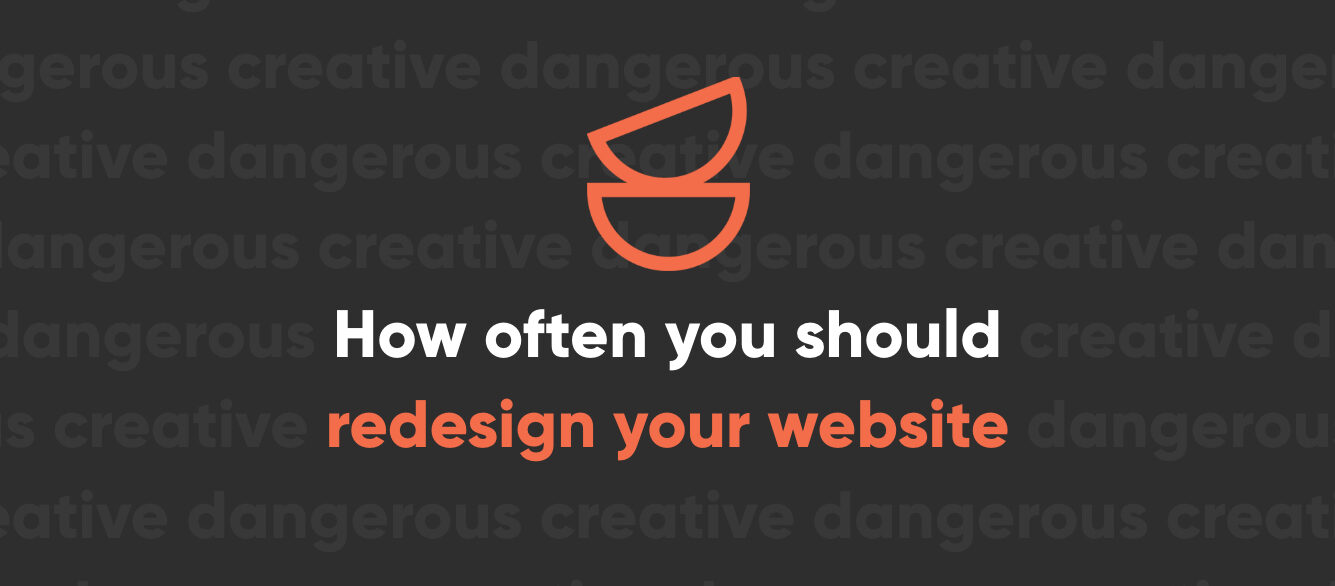
How Often You Should Redesign Your Website

We’re all familiar with the phrase “if it ain’t broke, don’t fix it.” However, these words of infinite wisdom can lead many business owners astray when it comes to their website. In fact, this little phrase was not created with the web in mind at all. Sometimes a website that seems to function pretty well (one that “ain’t broke”) desperately needs a redesign (a “fix”).
Redesigning a website is not a simple undertaking. It’s certainly not something you want to do every day. But if you don’t do it often enough, your company will quickly look stale, outdated, and out of touch with modern technology and trends. After all, your website is the face of your business. So let’s figure out how often your business needs a facelift.
Before We Continue, Let’s Talk Mobile Friendly
Is your website mobile friendly? If not, you need to stop reading this blog post immediately and find a web design company. Seriously. Do not read another word. You are losing business by the second.
Let’s not turn this into yet another post about how mobile is the future and blah, blah, blah. The fact is that more and more of your visitors are coming from mobile, Google is emphasizing mobile more and more, etc., ad nauseum. It’s the way it is. Embrace it or watch your business suffer. Period. Moving on...
So how old does a website have to be before redesigning?
Now that we have that out of the way, let’s address the original question. So how often should you redesign your website? The correct answer is 3 years, 3 months, 3 days, 3 hours, and 3 minutes on the dot (adjust accordingly for leap years). If it’s been even a second longer than that, you are way overdue for a new website.
Okay, that’s not really the answer. Believe it or not, there is no definitive timeline for when you have to get a new website. How often you need to redesign your website is going to depend on a lot of factors including your industry, your competition, your purpose, your business goals, and more. In some cases, a website that’s 5 years old might be further from a redesign than a website that’s 2 years old. It may seem like a cop out, but the answer here is, it depends.
The real shelf-life of a website as concluded by science (sort of)
“It depends” never really satisfies anyone, so let’s get a little more concrete. While there may not be a definitive answer, there is data out there that shows how often the best companies redesign their sites. Orbit Media searched for the answer and determined it was every 2.66 years, which is less than they thought it would be. Now, take this with something of a grain of your favorite tiny particle (sand, salt, etc.). This data is only looking at one very specific industry, and it’s an industry that arguably needs to be a little more aggressive about having a website with the latest and greatest look and feel.
Or maybe not. Regardless of your industry, a website’s shelf-life is relatively short. Look at how fast technology moves. Six years ago, almost no one visited your website on a mobile device. Now, over half your traffic is from smart phones. Mobile aside, trends change fast. During the past few years we’ve seen incredible evolution on the web. Things have gotten cleaner and more complex at the same time. Now we have responsive, parallax, lock screen, giant navigation, and dozens of other technologies and trends. If your old website is in some archaic fixed-width container, you might as well go in the corner along with those mobile unfriendly folks.
Watch out for the Warning Signs
There are plenty of indicators to help you determine if you need a new website. Age is certainly a factor. If it’s been a few years since you last gave your website a facelift, it’s probably time to at least consider it. But age should never be the deciding factor. You don’t throw out a 10-year mattress the day it turns 10, right? Nor do you drink chunky rotten milk just because it hasn’t expired yet.
Regardless of the age of your site, here are 10 questions you should ask yourself immediately:
- Is my website mobile friendly? (If not, why are you still reading this? We already told you to find a designer.)
- Has my business stayed exactly the same since my last website launched?
- Does my website look modern?
- Does my website function well on all technologies (browsers, screen sizes, devices, etc.)?
- Is my website better than the competition?
- Am I seeing steady growth with my current website?
- Do my customers compliment my website?
- Does my website align with my current business goals?
- Am I proud to share my website with potential clients or employees?
- Do I like looking at my website?
As you can probably guess, if you answered “No” to any of these questions, then you need a new website now. Of course, some of these questions are easier than others. Some rely on simple tests, others depend on data, and some are based entirely on subjective opinion. But the end result is the same across the board. All of these indicate your website is some level of broken and needs to be fixed, and the fix is almost always a redesign.
The Final Test
The best redesign test of all is this: Are you asking if your website needs to be redesigned? Because if you are, then it’s probably time to redesign your website. After all, why else would you be asking?

Nate Tower
Nate Tower is the President of Perrill and has over 12 years of marketing and sales experience. During his career in digital marketing, Nate has demonstrated exceptional skills in strategic planning, creative ideation and execution. Nate's academic background includes a B.A. with a double major in English Language and Literature, Secondary Education, and a minor in Creative Writing from Washington University. He further expanded his expertise by completing the MBA Essentials program at Carlson Executive Education, University of Minnesota.
Nate holds multiple certifications from HubSpot and Google including Sales Hub Enterprise Implementation, Google Analytics for Power Users and Google Analytics 4. His unique blend of creative and analytical skills positions him as a leader in both the marketing and creative worlds. This, coupled with his passion for learning and educating, lends him the ability to make the complex accessible and the perplexing clear.
Join Our Newsletter


Why Google Shouldn’t Reveal Its Search Algorithm


8 Signs You Need a Website Redesign



